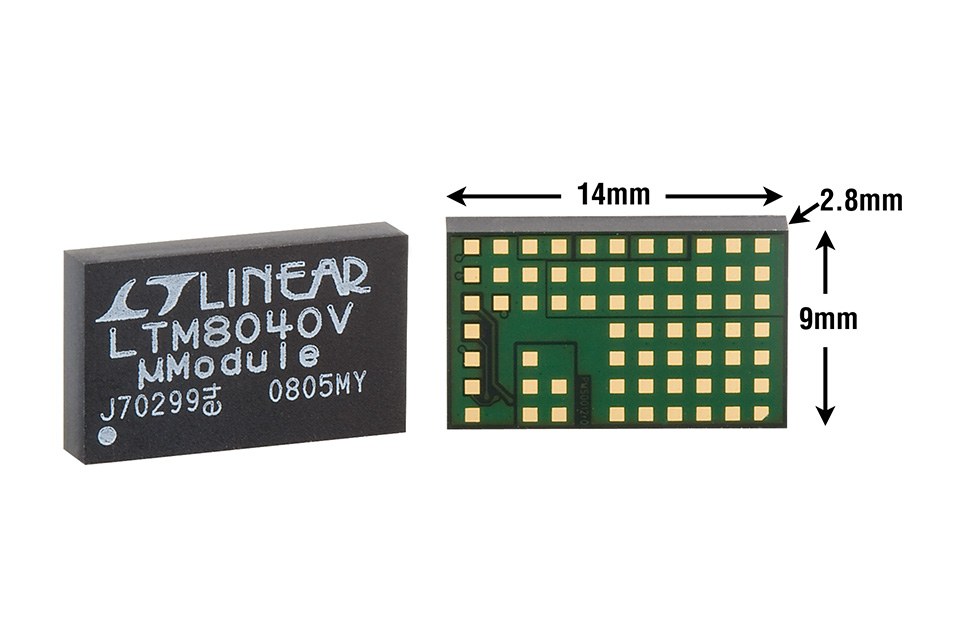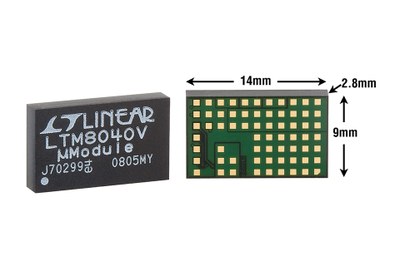µModule LED Driver Integrates All Circuitry, Including the Inductor in a Surface Mount Package
David Ng, Module Development Manager at Linear Technolgies, explaines the features of a compact step down DC/DC module for distributed LED power supplies in a DC grid that offers high efficiency, a wide dimming range, and a current range from 35 mA to 1 A.
Once relegated to the hinterlands of low cost indicator lights, the LED is again in the spotlight of the lighting world. LED lighting is now ubiquitous, from car headlights to USB-powered lava lamps. Car headlights exemplify applications that capitalize on the LED’s clear advantages—unwavering high quality light output, tough-as-steel robustness, inherent high efficiency—while a USB lava lamp exemplifies applications where only LEDs work. Despite these clear advantages, their requirement for regulated voltage and current make LED driver circuits more complex than the venerable light bulb, but some new devices are closing the gap. For instance, the LTM®8040 μModule® LED driver integrates all the driver circuitry into a single package, allowing designers to refocus their time and effort on the details of lighting design critical to a product’s success.
A Superior LED Driver
The LTM8040 is a complete step-down DC/DC switching converter system that can drive up to 1 A through a string of LEDs. Its 4 V to 36 V input voltage range makes it suitable for a wide range of power sources, including 2-cell lithium-ion battery packs, rectified 12 VAC and industrial 24 V. The LTM8040 features both analog and PWM dimming, allowing a 250:1 dimming range. The built-in 14V output voltage clamp prevents damage in the case of an accidental open LED string. The default switching frequency of the LTM8040 is 500 kHz, but switching frequencies to 2MHz can be set with a resistor from the RT pin to GND.
Easy to Use
The high level of integration in the LTM8040 minimizes external components and simplifi es board layout. As shown in Figure 1, all that is necessary to drive an LED string up to 1 A is the LTM8040 and an input decoupling capacitor. Even with all this built-in functionality, the LTM8040 itself is small, measuring only 15 x 9 x 4.32 mm.
Rich Feature Set
The LTM8040 features an ADJ pin for precise LED cur-rent amplitude control. The ADJ pin accepts a full-scale input voltage range of 0 V to 1.25 V, linearly adjusting the output LED current from 0A to 1A. Figure 2 shows the ratiometric response of the output LED current versus the ADJ voltage. The ADJ pin is internally pulled up through a 5.11k precision resistor to an internal 1.25 V reference, so the output LED current can also be adjusted by ap-plying a single resistor from ADJ to ground, as shown in Figure 3.


The PWM control pin allows high dimming ratios. With an external MOSFET in series with the LED string as shown in Figure 4, the LTM8040 can achieve dimming ratios in excess of 250:1. As seen in Figure 5, there is little distortion of the PWM LED current, even at frequencies as low as 10Hz. The 10Hz performance is shown to illustrate the capabilities of the LTM8040—this frequency is too low for practical pulse width modulation, being well within the discrimination range of the human eye.

The LTM8040 also features a low power shutdown state. When the SHDN pin is active low, the input quiescent current is less than 1μA.
Conclusion
The LTM8040 μModule LED driver makes it easy to drive LEDs. Its high level of integration and rich feature set, including open LED protection, analog and PWM dimming, save significant design time and board space.


